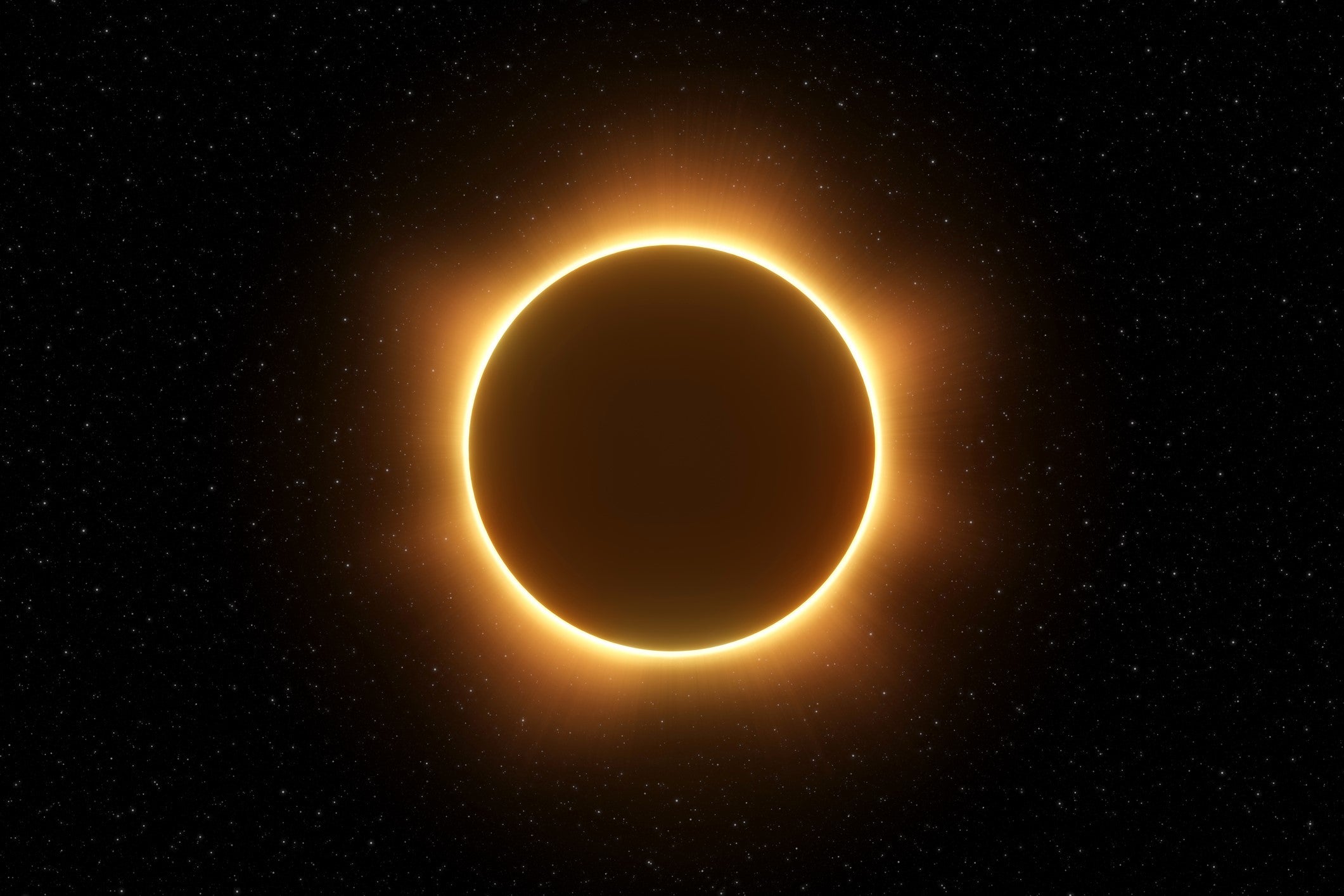Solar eclipse 2024: How to see today’s ‘ring of fire’ event
Live stream of annular solar eclipse is available for anyone not in South America
The New Moon will pass in front of the Sun on Wednesday, forming a “ring of fire” annular solar eclipse across the southern tip of South America.
It will pass directly over Argentina, Chile and Easter Island, while a crescent-shaped partial solar eclipse will also be visible across a broader region, including Brazil, Fiji, Hawaii, Mexico and New Zealand.

The time of the partial eclipse is 15:42 UTC, while the annular solar eclipse begins at 16:50 UTC and ends at 20:39 UTC. The partial solar eclipse then comes to an end at 21:47 UTC.
For those who are not beneath its path, the solar eclipse will be broadcast live from various observatories in the region, with Time And Date providing a live stream on its website, and EarthSky providing a video on its YouTube page.

What is an annular solar eclipse?
Solar eclipses happen when the sun, moon and Earth line up just so. The moon casts a shadow that can partially or totally block the sun’s light.
During an annular eclipse, the moon obscures all but a ring-shaped sliver of the sun. That’s because the moon is at a point in its orbit that’s farther from Earth.
“The moon is just not quite big enough to cover the sun,” said Carolyn Sumners at the Houston Museum of Natural Science.
This eclipse will occur mostly over water in the Pacific. Rapa Nui, known as Easter Island, is in the path along with parts of Argentina and Chile.
A partial solar eclipse, when the sun appears as a crescent, can be seen from several locations including Brazil, Paraguay, Uruguay and Hawaii.
Solar eclipses happen about two to five times a year. April's total eclipse of the sun dazzled skywatchers in parts of Mexico, Canada and the U.S.
How do I safely look at a solar eclipse?
Looking directly at the sun can cause eye damage, even when most of it is covered.
The annular eclipse is safe to spot wearing solar eclipse glasses, which block out ultraviolet light from the sun and nearly all visible light. Sunglasses or binoculars won’t cut it.
Glasses should say they comply with ISO 12312-2 standards, though fake suppliers can also list this on their products.
If you don't have eclipse glasses, you can still enjoy the spectacle indirectly. Make a pinhole projector using household materials or hold up a colander and look down to see an image of the eclipse projected below.
Peering at the ground under a shady tree can also reveal crescent shadows as the sunlight filters through branches and leaves.
What’s coming next?
Two partial solar eclipses will athe skies next year in March and September.
The next total solar eclipse will not appear until 2026 and will pass over the Greenland, Iceland and Spain. There will be two partial eclipses before then in 2025, arriving in March and September.
Additional reporting from agencies.
Join our commenting forum
Join thought-provoking conversations, follow other Independent readers and see their replies
Comments
Bookmark popover
Removed from bookmarks